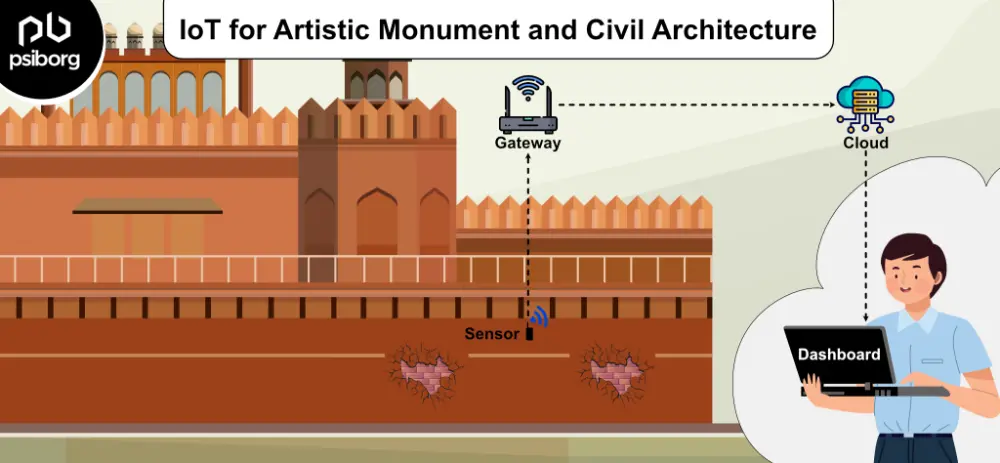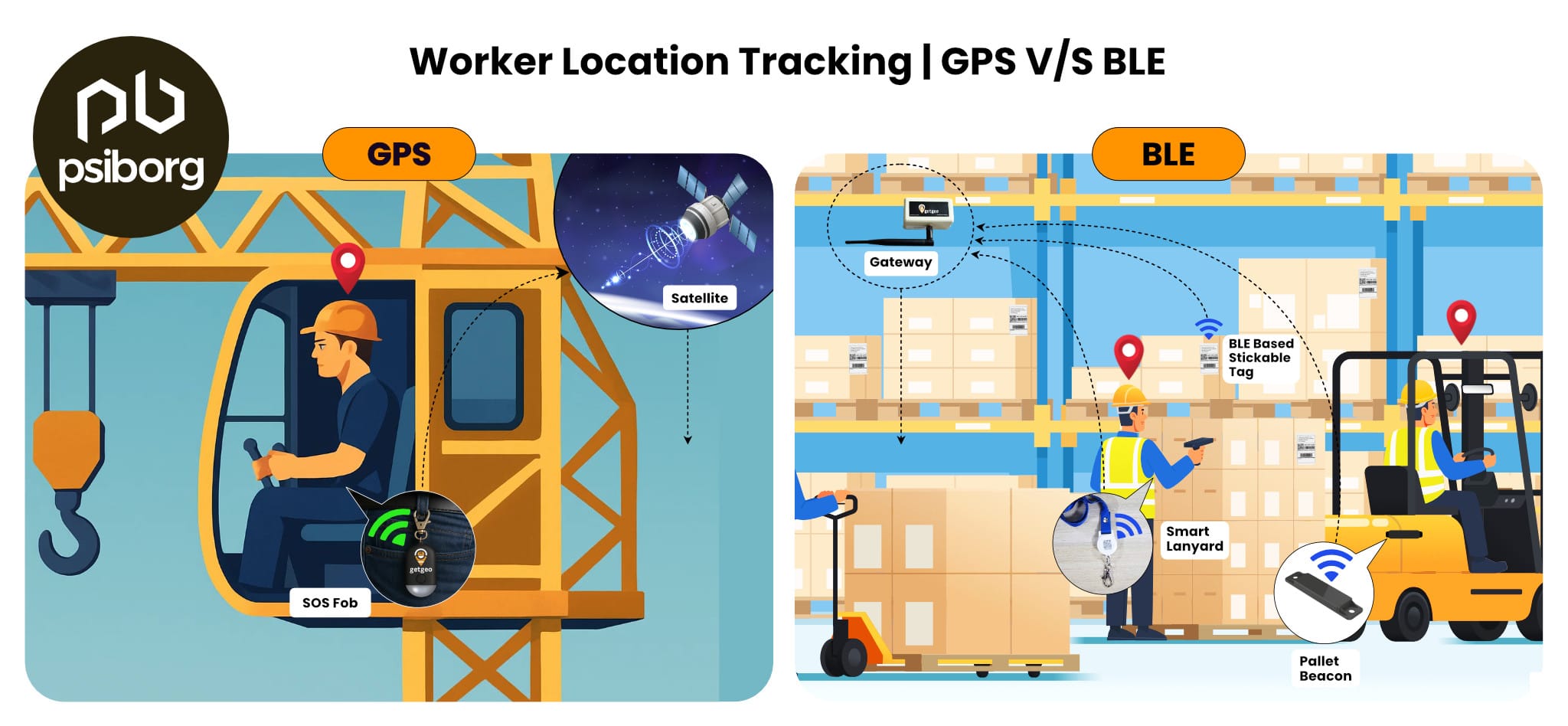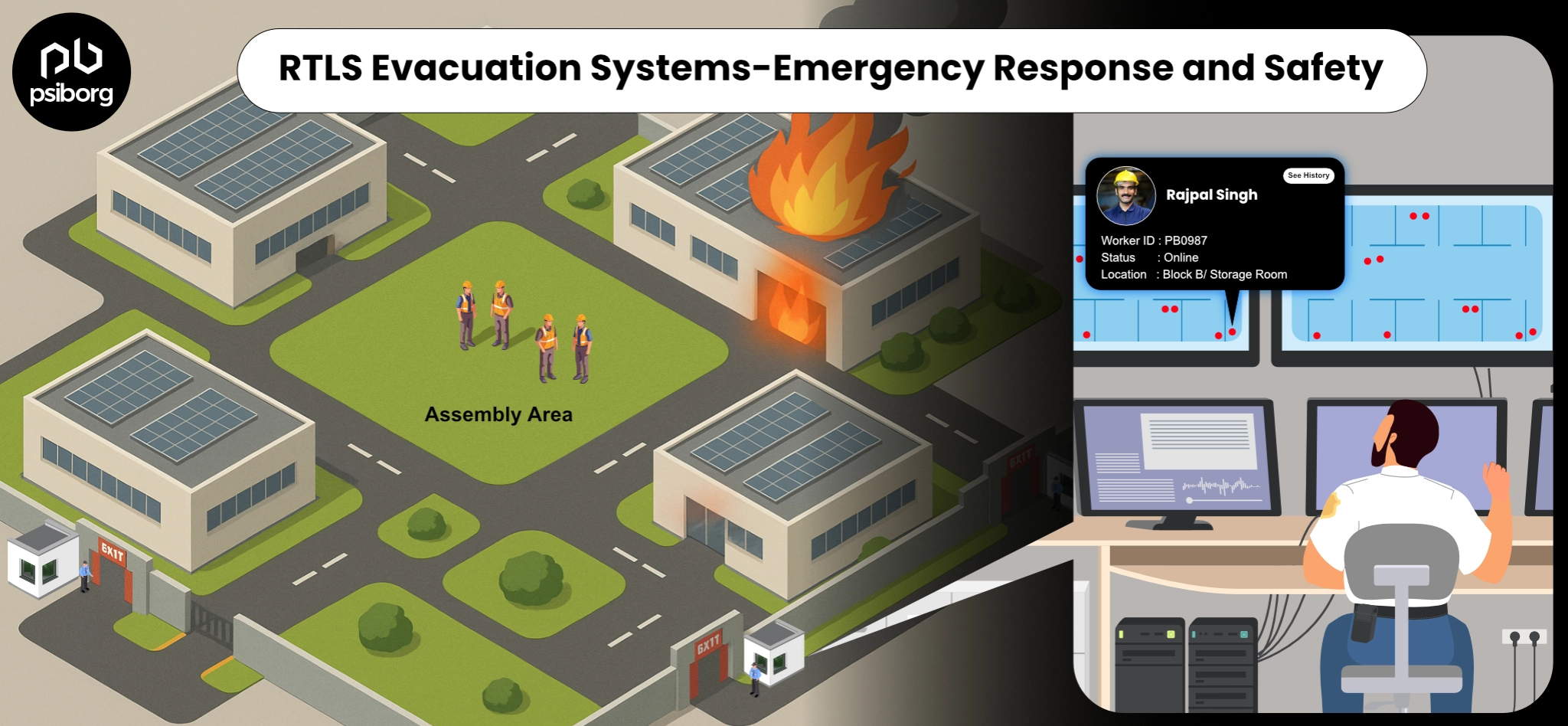Heritage and historical buildings are an integral part of a country, representing its culture, tradition, and values. It is essential that they are passed on to future generations. Thus, integrating IoT into artistic monuments becomes necessary to improve their structural longevity.
Cultural heritage, artistic monuments, and marvelous civil architecture provide a place with its own identity, and we should preserve and conserve them as much as possible.
UNESCO states that as tourism increases, it becomes more crucial to monitor and preserve cultural monuments.
Thus, the protection and preservation of artistic monuments are considered important responsibilities for policymakers and institutions. As well, we believe that technology, specifically the Internet of Things, can play a significant role in preventing incidents by designing structural architecture monitoring systems for these sites.
Now, let’s discuss how we can apply IoT to structural monitoring for monuments and civil buildings.
IoT for Conserving Artistic Monuments and Civil Architecture
India is a world known for its rich culture and heritage. The artistic monuments and architecture showcase the land’s history and tell about giant kingdoms, sumptuous empires, structures, monuments, and civilizations.
To maintain heritage and artistic monuments, structural monitoring for monuments is required.
And to perform monitoring, IoT technology is the most logical alternative.
Why IoT?
Well, because IoT is a way to make an object interact with the surrounding environment, making them “intelligent.”
Contrary to popular belief, the IoT does not confine itself to the innovation of traditional systems. Instead, it is hailed as the top technology for monitoring and tracking due to its provision of real-time information.
Nevertheless, climate change and pollution have a significant impact on artistic monuments.
(Remember how increased pollution caused the white Taj Mahal to turn yellowish!)
It is also challenging to monitor the impact of climate change on monumental sites, both quantitatively and qualitatively.
We can address this problem by using IoT technology. This can be achieved by integrating smart IoT devices. Such as smart tags, to get environmental measurements close to the monuments and develop a single decision support system.
Let’s discuss why IoT is a holistic solution for improving the resilience of historic monuments.
Structural Monitoring for Monuments and Architectures
An IoT-based structural health monitoring system can evaluate the structural safety and possible deformities of cultural heritage buildings in real-time.
The aforementioned solution is helpful in giving answers to questions like:
Is there any damage to the building structure?
What is the location of the damage?
What is the severity of the damage?
What is the estimated lifetime of the structure?
Below are the different ways in which IoT technology can assist in structural monitoring for monuments and monitor the health of heritage sites and architecture.

Real-time Monitoring
An IoT-based structural health monitoring system includes a series of sensors placed at strategic points on an art monument.
The sensors detect the presence and location of damage caused by earthquakes, cement degeneration, stone breakage, or the effects of pollution and tourism.
These monitoring systems use IoT, to carry out monitoring in a very short period of time. Thus providing real-time information and enabling institutions to make quick decisions related to the monuments.
Physiochemical Damage Monitoring
Being heritage structures, the morphology of artistic monuments is quite obvious. The construction material used in these cultural heritage sites is usually made of stone, so it is important to monitor the physiochemical damage.
The IoT-based solution encompasses wireless sensor networks that allow studying physiochemical damage and measuring variables such as temperature, relative humidity, moisture content, levels of polluting gases, and much more.
These sensors can also be used to monitor dilatations, corrosion, molds, and oxides in the monuments.
Mechanical Damage Monitoring
Mechanical damages ought to occur, and these mechanical damages can be hazardous to the stability of the monuments and can also cause harm to the users. So to solve this issue, there is one solution, i.e., setting up sensors at relevant points.
To monitor mechanical damage in heritage buildings, we can install sensors like:
Accelerometer to monitor vibrations. The vibrations can affect the operating behavior of the structure.
Inclinometer to monitor the inclinations and deviations from the vertical.
Crack meters and joint meters to determine the movements of the structures by opening the already existing cracks.
Positioning sensors to detect linear or rotary positions. To detect the tilt positioning.
The sensors mentioned above collect all the data, which is then transmitted to an IoT dashboard. This dashboard stores the sensor data, making it accessible for reading, graphing, and downloading for in-depth analysis.
Furthermore, this IoT solution integrates with an alarm/warning system. When a threshold is surpassed, the system sends a warning SMS to the user.
IoT-based structural health monitoring solutions offer predictive maintenance, making it possible to remotely supervise all data and allow one to act upon the received foresight.
In such a way, IoT technology can protect artistic monuments.
Challenges in IoT for Artistic Monuments and Civil Architectures
IoT is utilized in several use cases to preserve cultural heritage, including applications at renowned sites like the Ponte Vecchio bridge in Florence, the Colosseum in Italy, and Tutankhamun’s tomb in Egypt.
However, during the study of cultural heritage monuments, there can be some technical limitations. For instance, electricity or communication wiring might not be available on the site. This makes implementing IoT an intricate task.
Thus, low-power sensors capable of running on batteries for months offer a viable alternative, particularly when installing them in remote and hard-to-reach locations.
Applications of a Structural Monitoring System
The use of IoT based structural monitoring for monuments essentially means monitoring the structural conditions.
Through the solution we propose to analyze, collect data, and obtain information on the deterioration that may be present in decades-old monuments.
However, this proposed structural health monitoring system has many other applications beyond the conservation of artistic monuments.
Some very common applications of structural health monitoring systems are:
1. Building Monitoring System (BMS)
A building monitoring system uses IoT to get real-time information and fasten the decision-making process. Our IoT-enabled solution uses sensors to detect any damage caused by seismic events, degradation of cement, soil settlement, or concrete cracks.
To ensure comprehensive security, indoor comfort can also be monitored. It will include parameters like wind, temperature, and humidity, as well as indoor parameters such as indoor air quality and energy consumption.
The benefits of integrating a building monitoring system into your building and construction business are- a reduction in operational and maintenance costs, minimizing the chances of structural collapse, automating data collection and data reading tasks, and improving the safety of public places and structures.
2. Bridge Monitoring System
A bridge structural health monitoring system is designed and developed to detect and observe the condition of bridges and similar structures over a period of time. The monitoring part here includes detecting all kinds of damages, bending, or settlements. Smart sensors and devices can detect and extract data, which is analyzed further to ensure the current state of the bridge structure.
Here, the bridge monitoring system can be considered either vibration-based or strain-based. To differentiate between the two, in vibration-based techniques, changes like degradation and damage caused by any vibration force are measured.
Whereas in strain-based systems, the strain on the structure or the deformation of the structure is monitored.
Furthermore, remote monitoring using IoT offers an effective predictive maintenance approach, allowing the management team to timely intervene and minimize the risks related to structural damages.
3. Dam Monitoring System
Monitoring of dam architecture is also a part of structural health monitoring, which is crucial and helps professionals ensure the structural integrity of dams by monitoring several aspects of structural monitoring like strain, stress, inclination, displacement, cracks, and dam deformation.
Dam structure monitoring is crucial in terms of detecting the risks of structural failures and potential water level fluctuations. The dams are complex engineering structures and so are prone to potential failures like hydraulic failures that can lead to an increase in water level, causing external erosion.
Then there is mass movement, which is triggered by increased loads like floods or earth cracks. Internal erosion/erosion of soils can also hugely affect the foundation joints, thus compromising the dam’s integrity if not addressed timely.
4. Railway Monitoring System
Railways are literally the major transportation mode in a country, and if stopped, they can result in a huge economic loss. Thus, structural health monitoring of the railway system is also very crucial.
Structural health monitoring in railways includes the analysis of parameters like stress state, inclination, displacement, deformation, torsion, and the presence of cracks in tracks.
Railway monitoring systems also include some solution-specific tasks like measuring important track-related factors via height differences, track twisting, vertical movements, and oscillations. Additionally, the solution also incorporates geotechnical measurements like landslides, groundwater pressure, and water level, thus providing a full-scale railway monitoring solution.
5. Tunnel Monitoring System
Tunnels are another important part of a country’s transportation system, but their daily manual monitoring has some significant challenges.
Thus, IoT technology is used to monitor these heavy structures. In relation to the tunnels, the structural health monitoring system analyzes and monitors the squeezing of the ground condition, face collapse, and water level.
By deploying a tunnel monitoring system, potential defects can be detected timely for prompt action. Here, by monitoring potential defects, we mean monitoring the tunnels in poor rock conditions, the dynamic condition of the tunnel, and the rainwater level inside the tunnel for proper drainage.
How PsiBorg Can Help You Support Artistic Monuments?
PsiBorg understands that there is no “one-size-fits-all” solution for heritage sites. So we develop IoT based structural monitoring for monuments and civil architecture, depending on the needs and constraints of the buildings.
We at PsiBorg can develop low-power projects using the best technologies available in this space.
IoT for artistic monuments means conserving artistic monuments and heritage buildings with the use of Internet of Things technology. PsiBorg develops IoT systems that provide structural monitoring for monuments to monitor and control the degradation of historical buildings by detecting the structural health of artistic monuments. Sensor data helps in making informed decisions about how to preserve these buildings
IoT technology helps in the preservation of artistic monuments by uniting the physical and digital worlds through sensors. The sensors collect real-time data regarding the structural health of an architecture and send this information to allow the managing team to take informed steps for future conservation. IoT devices installed on the monuments help in detecting cracks and displacement of rock slabs, giving real-time insight into how these little cracks can lead to the big fall of a building.
The major benefit of implementing IoT in artistic monuments is to get real-time data on the structural health of a building. Factors like changing climatic conditions can lead to structural damage and eventually degrade these historical-artistic monuments. By continuously monitoring climatic changes and other environmental variables through sensors, we can easily detect potential issues and take timely actions to preserve precious landmarks and artistic monuments.





